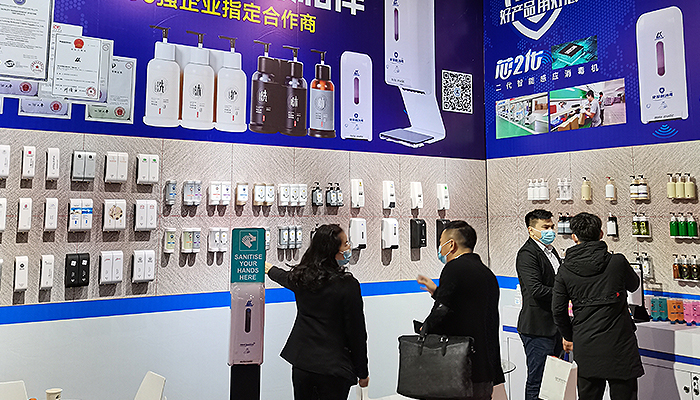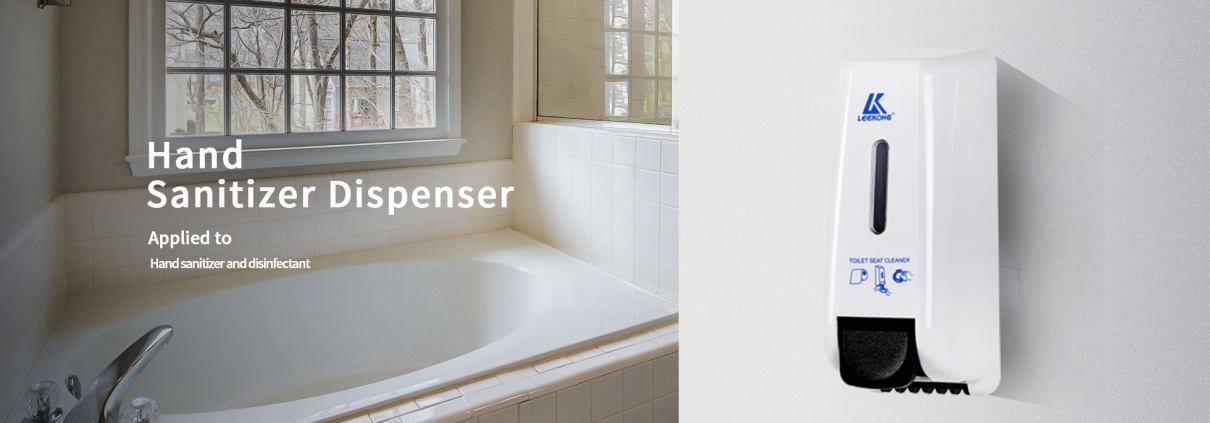Hand hygiene can be considered a strategic key useful in the containment of infections such as COVID-19 both at home and in communities because it can dramatically reduce the widespread outbreak of infections. In case of the unavailability of soap and water, “instant” hand sanitizers are recommended because their application can be considered easy, versatile, quick and often less aggressive for the skin. For these reasons, alcoholic and alcohol-free hand rub gels can be considered the best performing formulations on the market. Together with disinfectants and antiseptic agents, hydrogels play a fundamental role in obtaining stable formulations and are easy to disperse, with a pleasant skin feel and an overall good performance. Several compounds commonly used in the pharmaceutical, cosmetic and food industry are available for this purpose, in particular, cellulose derivatives and synthetic polymers derivatives. Each of them is available in several grades, presenting different thickening behavior, rheological properties and compatibility with other ingredients, alcohols in particular. For all these reasons, it is important to explore hydrogel properties and behaviors in different contexts (i.e., hydroalcoholic and aqueous media) in order to develop new and performing hand rub gels, always taking into account the different international legal frameworks regarding disinfectant and sanitizing formulations. It has been estimated that there are not less than 10,000 organisms per cm2 of normal skin, pathogenic transient flora included, and hands are regarded as one of the principal sites responsible for transmitting infections, such as pandemic ones. Hand sanitization includes (1) handwashing, in particular using a common soap in the presence of water; (2) handwashing, using a detergent (possibly antiseptic ones) with water; and (3) hand sanitization using alcoholic hand rubs. The Centers for Disease Control and Prevention (CDC) recommends washing hands with soap and water for at least 20 s. Rinse-off detergents are considered better performing than hand rub sanitizers in the removal of certain pathogens such as Norovirus, Cryptosporidium, and Clostridioides difficile, but when they are not available, or when repeated hand washing alters the skin’s natural barrier, “instant” hand sanitizers are recommended. The main goal of these topic sanitizers (antiseptic handrub or handrub products) is to remove or reduce the level of transient bacteria and viruses. In particular, an “instant” hand sanitizer is intended to be applied to dry hands, rubbed thoroughly over the fingers and hand surfaces for at least 30 s, and completely air-dried. They are formulated as foam, gel, or liquid preparations and they can be classified as alcohol-based rubs (ABR) or alcohol-free rubs (AFR), according to the active, antiseptic ingredients used. Their application can be considered more versatile, convenient, quick, and less irritatingwhen compared with the use of rinse-off detergents. ABRs generally contain alcohol, water, and other ingredients (in particular humectants and emollients); hands are their target to quickly destroy microorganisms and suppress their growth, in a broad germicidal spectrum. Nevertheless, their effect on pathogens seems short-lived and they do not have a strong activity against protozoa, bacterial spores, and some non-enveloped viruses.
The “WHO Guidelines on Hand Hygiene in Health Care: First Global Patient Safety Challenge Clean Care Is Safer Care” provides a useful scientific review on hand hygiene argument and suggests the best procedures in health care. The WHO describes a sanitizing hand rub as: “An alcohol-containing preparation (liquid, gel or foam) designed for application to the hands to inactivate microorganisms and/or temporarily suppress their growth. Such preparations may contain one or more types of alcohol, other active ingredients with excipients, and humectants” . The Centers for Disease Control and Prevention (CDC) and the World Health Organization recommend the use of ABR formulations containing 60 to 95% alcohol as the best practice for hand sanitization, but only when hands are not noticeably dirty. ABRs are considered a better performing tool in minimizing hand contamination, especially when compared to soap and water; however, the activity against non-enveloped viruses is still debated, particularly for formulations containing < 75% alcohol . Moreover, only a few researches refer to skin toxicity due to high alcohol content . To help countries in the adoption of alcoholic hand rubs as the best practice for hand hygiene and sanitization, the WHO has identified two simple formulations for local preparation, when commercial products may be unavailable.
The denatured alcohol works as the topical antiseptic or antimicrobial agent; hydrogen peroxide is included to inactivate contaminating bacterial spores in the final solution, but it cannot be considered an antiseptic ingredient. Glycerin is useful as the humectant agent; it affects the viscosity of the final product and provides a minimal level of moisturization to the skin, but an excessive amount of glycerin can reduce the germicidal activity of isopropanol and ethanol, as cited by a footnote of the World Health Organization (glycerin mixed with alcohols forms an azeotrope that can affect their activity. As an alternative, PEG-10 dimethicone and PEG-7 glyceryl cocoate can be use as refatting agents . Water performs as a solvent and vehicle to help deliver the final product to the skin. The addition of perfumes or dyes is not recommended.
Alcohol-free products (AFR) contain chemicals (biocides) with antiseptic properties, often used at low concentrations, and can be considered relatively safer than ABR, especially for children, also being non-flammable. However, they are less preferred by the health organizations for fighting COVID-19 because of their lower efficacy and because they are not broad-spectrum agents . Their antimicrobial action can be affected by different variables, such as other ingredients in the formulation components, dilution, the presence of an organic load, etc.
These liquid formulations present some difficulties to handle, potentially leading to the delivery of insufficient doses of active agents on the hands and to an overall reduction in hygiene compliance. In a recent study on ABRs, researchers investigated how many elements such as skin health, education, and user acceptance of ABRs might affect healthcare workers’ hand sanitization during and after application. The results show that despite the benefits that liquid products give (clean sensation, smooth and moisturized feel), the difficult handling and applying of the products cancel out the advantages of such formulations. Even if the WHO has recommended and described the preparation of two liquid hydro-alcoholic hand rub formulations, in the consumer market, hydrogel sanitizers are becoming increasingly popular. In fact, viscosity plays a significant role in many key aspects of a hand sanitizer gel’s functionality. Efficiency, performance, and customer perception are closely linked to viscosity values.
1. Hand hygiene with hand sanitizer versus handwashing: what are the planetary health consequences?
Hand hygiene is one of the most important ways of avoiding pathogen transmission. COVID-19, the disease caused by a new coronavirus called SARS-CoV-2, was first reported to the World Health Organisation (WHO) on December 31st 2019, originating in Wuhan, China. The disease was stated as a pandemic in 12 March 2020. Currently (April 22nd, 2021), 141.8 million people have been infected, with 3.026 million deaths globally.
To help prevent pathogen spread and in particular of Covid-19, the WHO recommends hand washing with soap and water (HW) or cleaning hands with alcohol hand sanitizer (HS) whenever hands are visibly dirty, as well as if hands are not visibly dirty. The WHO and Centre for Disease Control (CDC) both state that it is necessary to clean hands at key times with soap and water or HS with at least 60% alcohol. The WHO provides guidance for the contents of HS sanitizer based on ethanol or isopropanol (Centre for Disease Control Prevention 2020) The Coronavirus pandemic and subsequent public health recommendations have brought a shortage of HS all over the world. The WHO has two recommended formulations for HS: either ethanol or isopropanol as the alcohol ‘active ingredient’, with glycerin as a moisturiser. The ethanol or isopropanol alcohol has been shown to inactivate SARS-COV-2.Ethanol is produced as a bi-product of carbohydrate fermentation, whereas isopropanol alcohol (2-propanol) is manufactured by the indirect hydration of the fossil fuel propylene. Plain soap works by mechanical action to remove pathogens but also to inactivate enveloped viruses, such as the COVID-virus, dissolving the oily surface membrane. Soap is made from reacting oil with a strong alkali or caustic. Planetary health is the health of human civilization and the state of the natural systems on which it depends. The overall planetary (and public) health impact of hand hygiene is as yet unquantified. There are different ways to measure both environmental sustainability and the consequential planetary health impact. One method is service level carbon footprinting; this accounts for the climate change impact by looking at greenhouse gas emissions and global warming potential. However, not only is this a resource intensive process, but climate change and global warming is a single measure of sustainability and does not account for impacts such as eutrophication of water supplies, resource scarcity, and reduction in biodiversity, to name a few.
A life cycle assessment (LCA) can also be used to consider the entire life cycle of a product from ‘cradle to grave’. LCA data can be used to quantify multiple environmental impacts as well as other useful public health information such as Disability Adjusted Life Years (DALYs). DALYs consider both the time lost to premature death and reduced quality of life due to illness.
Although LCAs have been used to compare different types of hand drying), from our knowledge LCAs have not been used to compare the use of HS types compared with HW. The objectives of this study were to compare the environmental sustainability of the UK population using different methods of hand hygiene using ethanol and isopropanol HS vs using liquid and bar soap HW, in the context of the COVID-19 pandemic. The components and manufacturing processes for hand sanitiser were based on the WHO hand hygiene guidelines (WHO, 2009). The weight of each constituent of the sanitiser was based on the density and volume needed to produce 1 L of product. Fragrances and pigments were excluded from all products as they were not consistent product by product, and were assumed to be present in equal quantities across all types of products assessed. It was assumed that components for hand sanitiser were mixed in a pressure-protected mixing machine and immediately packaged in screw top bottles to prevent evaporation, as per WHO guidelines (WHO, 2009). It was assumed that all liquid soap and sanitizer products were packaged by machine assembly in 1 L cylindrical plastic bottles (made from recycled polyethylene terephthalate) with a plastic lid (polyethylene) and a printed paper label that wraps around the bottle. The weight of the bottle, lid, and label were based on a tear down of a sample 1L sanitizer bottle. The constituents of the liquid and bar soap were assumed to include palm oil, cottonseed oil, and soybean oil as per the Ecoinvent dataset for a basic soap. For bar soap, it was assumed that 90 g bars of soap were stamped and packaged in printed cardboard boxes only, based on a tear down of a sample bar of soap.
Based on hand hygiene advice to control the transmission of COVID-19, it was assumed that each individual in the UK would practice hand hygiene for COVID-19 purposes an average of 15 times per day. This is based on the average individual leaving the house twice daily (for work and one other occasion), using the toilet 5 times, coughing or sneezing twice, and preparing meals. The functional unit in this study was the entire UK population, which was assumed to be 66,796,800 individuals based on 2019 government data. The amount of sanitiser used per episode of hand hygiene was assumed to be 4 ml based on Zingg et al. The amount of soap used per episode of hand hygiene was deemed to be 0.35 g for the bar soap and 1.5 ml for liquid soap Hand hygiene with HS does not require water. For HW with liquid or bar soap, it was assumed an individual would use room temperature tap water for an average of 40 s (NHS, 2019) with a UK tap using 5L of water per minute. Hand hygiene with HS does not require drying the hands with a towel as the contents evaporate. For HW with liquid or bar soap, the drying of hands with a hand towel was included. It was assumed individuals would be practicing HW at home, and therefore using a pre-existing hand towel to thoroughly dry their hands. Therefore, the manufacture of the towel was excluded from the system boundaries, but the laundering of the hand towel was included. It was assumed that each household would share a 350 g hand towel (based on an average of 2.3 people per household in the UK) and would launder this hand towel every other day.




